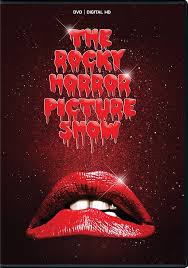
Introduction
The Rocky Horror Picture Show has transcended time since its release in 1975, becoming a staple of pop culture and an enduring cult classic. This musical comedy horror film, based on a stage production by Richard O’Brien, not only revolutionized the midnight movie experience but also played a crucial role in promoting LGBTQ+ visibility and acceptance. Its danceable tunes and flamboyant characters continue to resonate, making it a relevant topic for audiences today.
A Night to Remember: The Midnight Screening Phenomenon
Initially met with mixed reviews, The Rocky Horror Picture Show began its journey to cult status through the unique experience of midnight screenings. These events allowed audience participation in a way rarely seen in cinema prior to its release. Viewers would dress up as characters, shout lines back at the screen, and even bring props, creating a participatory culture that has persisted for nearly five decades. Today, theaters around the world continue to hold these screenings, celebrating the film’s originality and its embrace of the eccentric.
Cultural Impact and Relevance
The film not only brought a new type of entertainment to the mainstream but also challenged societal norms regarding gender and sexuality. Characters like Dr. Frank-N-Furter, played by Tim Curry, became icons of sexual liberation and defiance against traditional gender roles. The music, including memorable songs such as “Time Warp” and “Sweet Transvestite,” has remained influential in both theatrical productions and popular culture.
Moreover, various adaptations and tributes, including television remakes and stage performances, highlight the film’s ongoing relevance. Recently, Fox’s 2016 television remake sparked both interest and criticism, proving that the legacy of The Rocky Horror Picture Show is still very much alive and that new generations are eager to engage with its themes.
Conclusion: The Future of a Classic
In conclusion, The Rocky Horror Picture Show stands as a testament to the power of art in challenging societal norms and creating a space for individuality. As it continues to be celebrated through midnight showings and cultural references, its influence on film and society cannot be overstated. The future looks promising, with new audiences discovering its charm and relevance, ensuring that the legacy of this movie will remain integral to discussions about inclusivity and creative expression in cinema.



